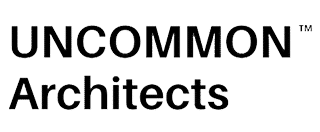Definition:
Return on Investment (ROI) for architecture firms refers to the measure of the profitability of an architectural project compared to the initial investment. It is a crucial metric that helps firms assess the effectiveness of their marketing strategies and the overall success of their projects.
Detailed Description
Return on Investment (ROI) is a financial metric used by architecture firms to evaluate the efficiency and profitability of their projects. By comparing the gains from an investment to the cost of that investment, firms can determine the success of their marketing efforts and make informed decisions for future projects.
Applications in Architecture
ROI plays a vital role in guiding architectural firms in allocating resources effectively, optimizing marketing campaigns, and evaluating the performance of their projects. It helps firms measure the value generated from their investments and identify areas for improvement.
Uses:
In the architectural industry, ROI enables firms to make data-driven decisions, prioritize projects based on profitability, and demonstrate the impact of their marketing strategies to clients and stakeholders. By calculating ROI, firms can optimize their marketing budgets and ensure a positive return on their investments.
Examples:
For example, an architecture firm invests in a targeted advertising campaign to promote a new residential development. By measuring the ROI of the campaign, the firm can assess the effectiveness of their marketing activities, identify the most successful channels, and adjust their strategies accordingly to maximize profitability.
Implementation
Procedure:
To calculate ROI for architecture firms, the formula involves dividing the net profit from a project by the total cost of the project and expressing the result as a percentage. This calculation provides firms with insights into the success of their marketing efforts and helps them make informed decisions for future projects.
Steps:
1. Determine the total cost of the architectural project, including marketing expenses.
2. Calculate the net profit generated from the project.
3. Apply the ROI formula: ROI = (Net Profit / Total Cost) x 100.
4. Analyze the ROI to assess the profitability of the project and optimize future marketing strategies accordingly.
Considerations
ROI is a critical metric for architecture firms to measure the effectiveness of their marketing efforts and make informed decisions for their projects.
Expected Outcomes
By calculating ROI, architecture firms can:
– Evaluate the success of their marketing strategies.
– Identify areas for improvement and optimization.
– Demonstrate the value generated from their investments to clients and stakeholders.
Outcomes:
Implementing a robust ROI measurement strategy can lead to improved project profitability, optimized marketing campaigns, and enhanced decision-making for architectural firms. By understanding the ROI of their projects, firms can make data-driven decisions that drive success and profitability.
Impact:
The short-term impact of calculating ROI includes optimizing marketing budgets, enhancing project profitability, and improving decision-making processes. In the long term, consistent measurement of ROI can lead to increased efficiency, enhanced client satisfaction, and sustainable growth for architecture firms.
Maintenance and Monitoring
Regularly monitoring and analyzing ROI is essential for architecture firms to ensure the continued success and profitability of their projects.
Best Practices:
To maintain the effectiveness of ROI measurement, architecture firms should:
– Track ROI for each project and marketing campaign.
– Regularly review and adjust marketing strategies based on ROI data.
– Use ROI insights to inform future project decisions and marketing initiatives.
Strategies:
Developing a comprehensive ROI monitoring strategy can help architecture firms identify trends, optimize marketing efforts, and drive project success. By implementing best practices for ROI maintenance and monitoring, firms can achieve long-term profitability and growth.
Additional Information
Related Terms
Associated Concepts:
– Cost-Benefit Analysis
– Marketing Performance Metrics
– Project Profitability Analysis
Connections:
ROI for architecture firms interacts with other marketing terms and strategies to drive project success and profitability. By integrating ROI calculations with related concepts, firms can optimize their marketing efforts and achieve sustainable growth.
Recent Trends
Innovations:
Recent innovations in ROI analysis tools and software have improved the accuracy and efficiency of calculating ROI for architecture firms. New technologies and approaches allow firms to gain deeper insights into the profitability of their projects and make more informed decisions.
Updates:
Stay informed about the latest trends and changes in the architectural industry that may impact ROI calculations and marketing strategies. By keeping up-to-date with industry developments, firms can adapt their approaches and stay ahead of the competition.
How Uncommonarchitects.com can help you with this
Uncommon Architects provides tailored marketing solutions and consultancy services to help architecture firms maximize their ROI. Through data-driven strategies and industry expertise, we assist firms in optimizing their marketing campaigns, enhancing project profitability, and achieving sustainable growth.
Explain how:
By partnering with Uncommon Architects, firms can benefit from our proven track record in delivering tangible results through strategic marketing initiatives. We offer customized solutions that align with the unique goals and requirements of architecture firms, helping them achieve maximum ROI and business success.
Benefits:
– Increased project profitability
– Optimized marketing campaigns
– Data-driven decision-making
– Enhanced client satisfaction
– Sustainable growth and success
Are you ready to transform your studio?
FAQs
What is the ROI for Architecture Firms?
ROI for Architecture Firms varies depending on factors such as project size, market conditions, and operational efficiency.

